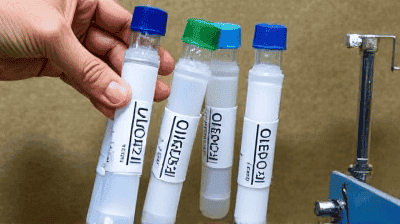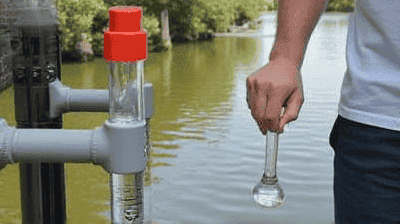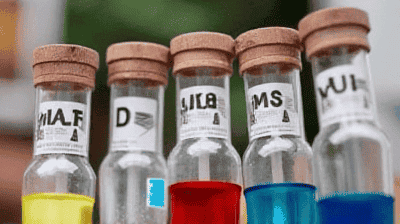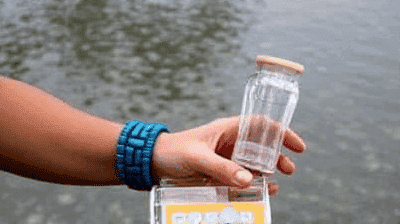
Access to clean and safe drinking water is a fundamental human right, yet millions around the world are affected by water pollution. While government agencies and environmental organizations monitor water quality, many communities still lack timely and accessible information about their local water sources. In recent years, the rise of do-it-yourself (DIY) water testing kits has empowered individuals and communities to take matters into their own hands, enabling them to monitor water quality and advocate for change.
Water quality refers to the chemical, physical, and biological characteristics of water; it is essential for human health, environmental sustainability, and economic development. Key indicators of water quality include:
pH Level: Measures the acidity or alkalinity of water. An overly acidic or alkaline environment can be harmful to aquatic life and human health.
Dissolved Oxygen: Essential for the survival of fish and other aquatic organisms. Low levels can indicate pollution or excessive nutrient runoff.
Chemical Contaminants: Includes heavy metals, pesticides, and industrial chemicals that can be harmful even at low concentrations.
Microbial Indicators: The presence of pathogens such as bacteria, viruses, and protozoa that can cause illnesses in humans.
Turbidity: Refers to the cloudiness or haziness of water, which can indicate the presence of suspended solids or pollutants.
Monitoring water quality is crucial for several reasons:
Public Health: Contaminated water can lead to serious health issues, including gastrointestinal infections, reproductive problems, and neurological disorders.
Environmental Protection: Monitoring helps protect aquatic ecosystems, ensuring that the water remains suitable for wildlife and plant life.
Regulatory Compliance: Regular testing helps governments and industries comply with environmental regulations, ensuring public access to safe water sources.
Community Empowerment: Engaging communities in water quality monitoring fosters awareness and gives residents the tools to advocate for their needs.

Water pollution can be categorized into several types, including:
Point Source Pollution: Pollution that comes from a single, identifiable source, such as a wastewater treatment plant or industrial outfall.
Non-Point Source Pollution: Diffuse pollution that does not originate from a single source. It includes agricultural runoff, urban stormwater, and sedimentation.
Chemical Pollution: The introduction of harmful chemicals into water bodies, including heavy metals, pesticides, and pharmaceuticals.
Microbial Pollution: Contamination by pathogens, often due to improper sanitation practices or animal waste runoff.
Water pollution has a significant global impact:
Health Crisis: According to the World Health Organization (WHO), contaminated drinking water is responsible for over 2 million deaths each year, particularly in developing countries.
Environmental Damage: Polluted water bodies can lead to the destruction of ecosystems, loss of biodiversity, and harm to aquatic life.
Economic Consequences: Water pollution can affect livelihoods dependent on clean water, such as fishing and tourism, and can lead to costly cleanup efforts.
DIY water testing kits are tools that individuals can use to analyze the quality of their water at home or in their communities. These kits typically include:
Testing Strips: Color-coded strips that change color based on the concentration of specific contaminants, such as pH, chlorine, nitrates, and lead.
Liquid Reagents: Chemicals that react with water samples to indicate the presence of specific contaminants or properties.
Sampling Containers: Bottles or vials for collecting water samples.
Instruction Manuals: Guides that explain how to collect samples, conduct tests, and interpret results.
Accessibility: DIY kits are often affordable and easy to use, making water testing more accessible to the general public.
Empowerment: Providing communities with tools to test their water enables them to effectively monitor their local resources and advocate for improvements.
Real-Time Results: Unlike waiting for laboratory testing, DIY kits can provide immediate feedback on water quality, allowing for timely action if contamination is detected.
Localized Data: Communities can generate valuable data about their watersheds, helping to identify specific pollution sources and trends that may otherwise go unnoticed.
Education and Awareness: Using these kits educates individuals about water quality issues, fostering broader discussions about environmental protection and public health.

DIY water testing fosters community engagement through:
Workshops and Training: Organizations can host workshops to educate residents on water quality, the importance of testing, and how to use DIY kits effectively. These workshops can also encourage community bonding and collaboration.
Citizen Science Initiatives: Communities can organize events where residents collectively test local water sources, generating data and building awareness of local water quality issues.
Advocacy: Armed with testing results, communities can advocate for policy changes, funding for cleanup efforts, or improvements to local infrastructure, such as wastewater treatment facilities.
The Freshwater Trust is an organization dedicated to improving freshwater ecosystems through community engagement and scientific research. They utilize DIY water testing kits in their “Water Quality Monitoring Program.”
Implementation:
Impact:
The Great Lakes region of North America faces significant water quality challenges. The Great Lakes Water Quality Board developed a DIY water testing initiative to involve citizens in monitoring water quality.
Implementation:
Impact:
Clean Water Action is a grassroots organization focused on ensuring clean water and healthy communities. They provide DIY water testing kits as part of their community education programs.
Implementation:
Impact:
Educate Yourself: Familiarize yourself with local water quality issues, contaminants of concern, and the importance of water testing.
Acquire a DIY Water Testing Kit: Purchase a reputable DIY water testing kit that meets your needs and includes tests for the relevant contaminants in your area.
Collect Water Samples: Follow the instructions provided with the kit to collect samples from different sources, such as taps, wells, or local water bodies.
Conduct Tests: Perform the tests as indicated in the manual. Record your results, noting any contaminants present.
Analyze Your Data: Compare your results to local water quality standards and regulations. Understand what your findings mean for your health and safety.
Share Your Findings: Report your results with local authorities, public health departments, or environmental organizations. Sharing your data can help inform broader community awareness and advocacy efforts.
Host Workshops: Collaborate with local organizations to host workshops where community members can learn about water quality testing and participate in collective testing efforts.
Create a Community Database: Develop a platform for residents to share their water testing results, helping to compile localized data that identifies trends or potential sources of pollution.
Engage Local Leaders: Work with local government officials or environmental leaders to raise awareness about water quality issues and advocate for necessary changes.
Use Social Media: Use social media platforms to create a community network focused on water quality, sharing results, tips, and ongoing efforts to improve local conditions.
Establish Ongoing Monitoring Programs: Encourage communities to make water testing a regular practice, providing kits and training to ensure long-term engagement.
Advocate for Infrastructure Improvements: Use the information gathered from DIY testing to advocate for necessary infrastructure upgrades, such as better wastewater treatment facilities and stormwater management systems.
Collaborate with Researchers: Partner with local universities or research institutions to enhance data collection efforts. Academic involvement can lend credibility and expertise to community monitoring efforts.

While DIY kits can provide valuable insights, their reliability and accuracy can vary. Low-cost kits may not detect certain contaminants accurately or may have limited testing capabilities.
Solution: Use reputable kits and consider pairing DIY testing with occasional lab analysis for more comprehensive data. Collaborate with organizations that offer professional analysis to provide checks on local testing efforts.
Sustaining community interest and involvement can be challenging. Initial enthusiasm may waned over time, especially if individuals don’t see immediate changes.
Solution: Foster ongoing engagement through regular community events, educational opportunities, and recognition of participants’ contributions. Create a sense of ownership and pride in the community’s water quality efforts.
Some regions have strict regulations surrounding water testing, particularly if results indicate contamination. Community members may face challenges when reporting findings or advocating for action.
Solution: Work closely with local environmental agencies to understand regulations and ensure that reporting efforts align with legal guidelines. Foster partnerships with formal organizations that can navigate the regulatory landscape.
The rise of DIY water testing kits represents a transformative shift in water quality monitoring, empowering individuals and communities to take charge of their water resources. By providing accessible tools and fostering education, these kits enable grassroots efforts to track pollution, promote awareness, and spur advocacy for cleaner water.
In a world where water pollution poses significant health risks and environmental challenges, community engagement through DIY testing becomes essential. Citizens equipped with knowledge and tools can advocate for their rights, push for policy changes, and ultimately safeguard their water supplies for current and future generations.
As the movement toward DIY water testing continues to grow, communities around the world have the opportunity to foster a culture of accountability, awareness, and action in protecting one of our most valuable resources—clean water.